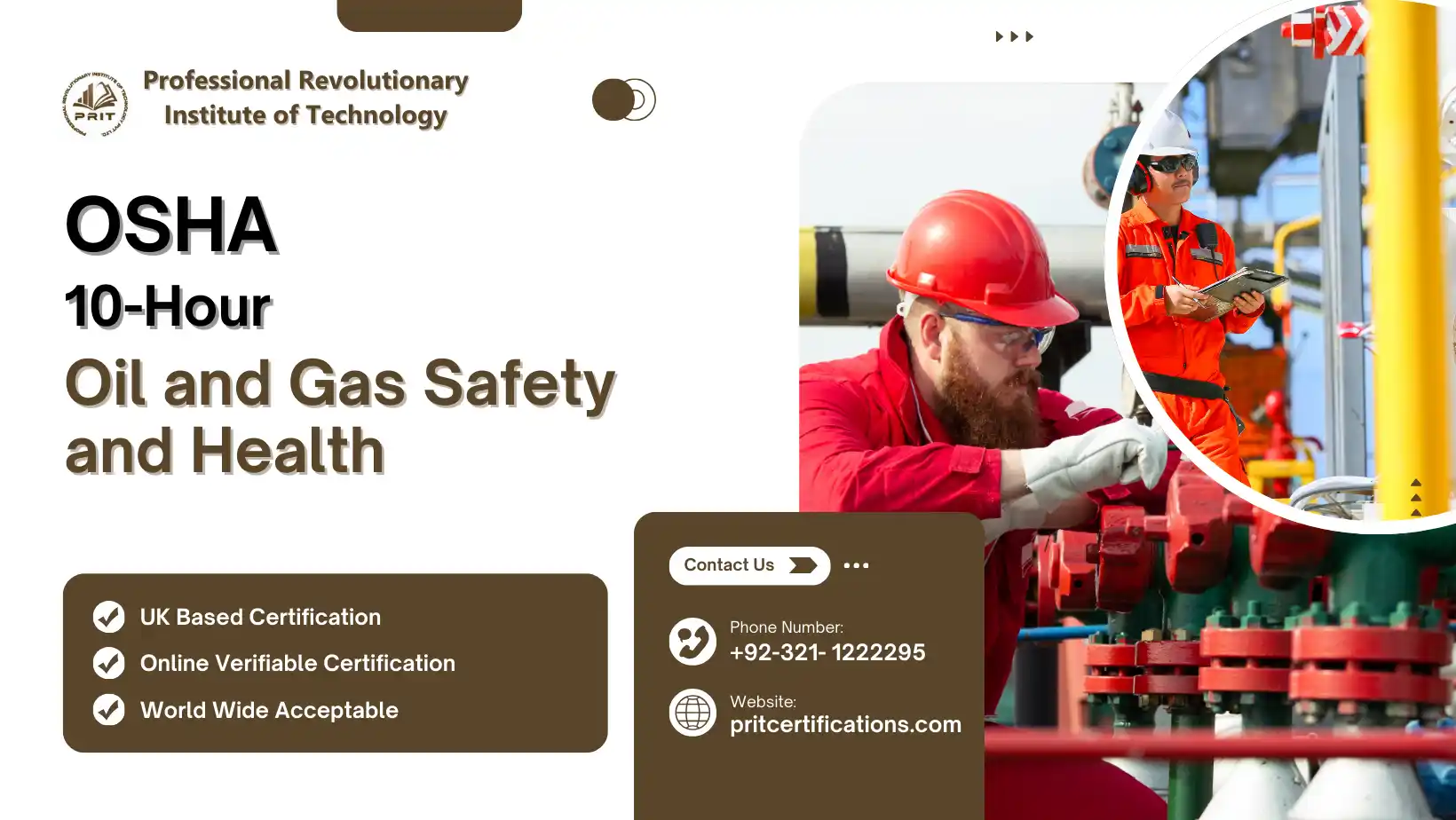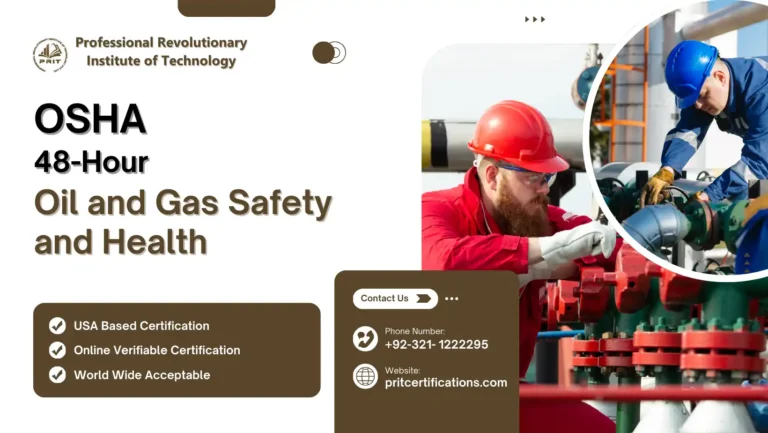
The OSHA 10-Hour Oil and Gas Safety and Health course is designed for workers and entry-level professionals in the oil and gas industry who need essential knowledge of workplace safety. As one of the world’s most hazardous industries, oil and gas operations expose employees to unique risks such as fire, explosions, chemical hazards, confined spaces, and heavy machinery. This course provides a solid foundation for understanding workplace hazards, applying OSHA standards, and implementing safe work practices.
Covering vital topics such as fall protection, hazard communication, fire safety, confined space entry, and personal protective equipment (PPE), the program equips learners with the skills to recognize, evaluate, and control hazards in oil and gas environments. The training also emphasizes the importance of compliance with OSHA regulations and building a strong safety culture.
Upon completion, participants will be better prepared to contribute to safer workplaces, reduce accidents, and enhance organizational compliance. This course is highly recommended for new employees, contractors, and workers who want to strengthen their occupational health and safety awareness in oil and gas operations.
Course Overview
Qualification Title: OSHA 10-Hour Oil and Gas Safety and Health
Regulated by: OSHA
Guided Learning Hours (GLH): 10 hours
Credits: Equivalent CEUs recognized internationally
Level: Entry-Level Professional/Industry-Specific Training
Mandatory Units
- Introduction to OSHA and the Oil and Gas Industry
- Fall Protection
- Electrical Safety
- Confined Space Entry
- Emergency Action Plans
- Fire and Explosion Hazards
- Personal Protective Equipment (PPE)
- Health Hazards in the Oil and Gas Industry
- Hazard Communication and Chemical Safety
- Control of Hazardous Energy (Lockout/Tagout)
Course Learning Outcomes
By the end of this course, learners will be able to:
- Introduction to OSHA and the Oil and Gas Industry
- Understand OSHA’s role and responsibilities in oil and gas safety.
- Identify key hazards unique to oil and gas operations.
- Fall Protection
- Apply OSHA standards for preventing falls in the workplace.
- Safely use fall protection systems and equipment.
- Electrical Safety
- Recognize electrical hazards in oil and gas facilities.
- Implement safe practices and lockout/tagout procedures.
- Confined Space Entry
- Follow safe entry protocols for confined spaces.
- Identify risks and apply protective measures.
- Emergency Action Plans
- Develop and follow effective emergency action procedures.
- Respond appropriately during workplace incidents.
- Fire and Explosion Hazards
- Identify fire and explosion risks in oil and gas operations.
- Implement OSHA-compliant fire prevention and response measures.
- Personal Protective Equipment (PPE)
- Select and properly use PPE for different job roles.
- Maintain PPE according to OSHA guidelines.
- Health Hazards in the Oil and Gas Industry
- Recognize occupational health risks such as chemical exposure, noise, and vibration.
- Apply strategies to minimize and control health hazards.
- Hazard Communication and Chemical Safety
- Interpret OSHA’s Hazard Communication Standard (HazCom).
- Safely handle, store, and label chemicals.
- Control of Hazardous Energy (Lockout/Tagout)
- Apply OSHA’s lockout/tagout standards.
- Prevent accidental equipment startup during maintenance.
Entry Requirements
- Minimum age: 18 years.
- Basic literacy and numeracy skills.
- No prior qualifications required; suitable for entry-level workers.
- Recommended for individuals working or planning to work in oil and gas environments.
Course Benefits
- OSHA-recognized certification valued globally.
- Builds a strong foundation in oil and gas safety.
- Enhances workplace compliance with safety standards.
- Reduces accidents and improves worker protection.
- Strengthens career opportunities in oil, gas, and energy sectors.
Why Choose This Course?
- Designed specifically for oil and gas environments.
- Practical, internationally recognized safety training.
- Ideal for new workers or contractors in the industry.
- Provides immediate workplace application of safety practices.
- Pathway to advanced OSHA and industry-specific safety programs.
Who Can Enroll in This Course?
- Entry-level workers in oil and gas operations.
- Contractors and subcontractors.
- HSE assistants and junior safety professionals.
- Technicians and support staff exposed to industrial risks.
- Individuals seeking foundational knowledge of oil and gas safety.
Future Progression
After completing the OSHA 10-Hour Oil and Gas Safety and Health, learners can progress to:
- OSHA 30-Hour Oil and Gas Safety and Health for advanced knowledge.
- Specialized OSHA certifications in confined space, fire safety, or chemical handling.
- Internationally recognized diplomas in occupational health and safety.
- Career advancement to supervisory or safety-focused roles.






